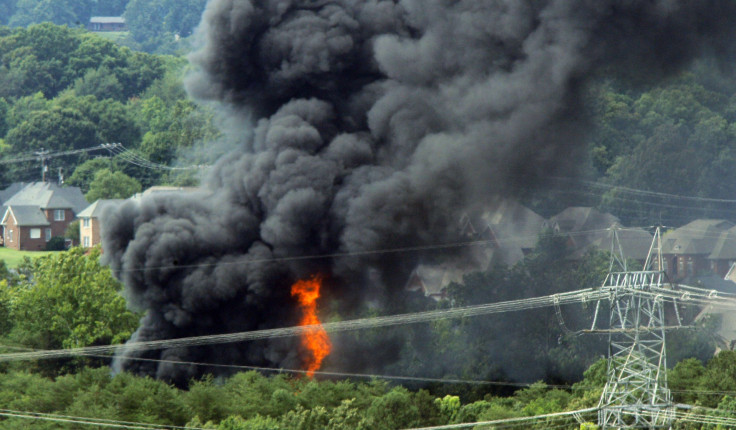Thousands Evacuated After Freight Train Derails, Catches Fire, In Tennessee

A freight train carrying flammable and toxic gas derailed in eastern Tennessee, igniting a fire in one car and spreading noxious fumes that forced the evacuation of more than 5,000 people and the hospitalization of 25, officials said.
Homes and businesses were evacuated following the derailment around midnight Wednesday of the CSX Corp (CSX.N) train in Blount County, near Maryville, the officials they said.
CSX and U.S. regulators are investigating the derailment's cause. Local officials said the U.S. Environmental Protection Agency was monitoring air quality in the area.
Matt Farr, his brother and their parents woke up to the news in Maryville and grabbed a change of clothes at about 8:30 a.m. before heading to a nearby animal center to drop off their Yorkie dog, Rosie.
Farr, 21, said his family planned to stay at a nearby hotel until the evacuation is lifted.
"We didn't think we'd be there that long, but now it's starting to look like we may be there for a couple days," he said from the animal center. "We've had trains derail before, but not with chemicals, so it's pretty bad."
Firefighters were allowing the blaze to burn itself out on the advice of specialists, as attempts to extinguish it could be hazardous, Blount County firefighter Kermit Easterling said. CSX said at 3:30 p.m. that the tank car continued to burn, making it unsafe to establish any transfer operations.
Blount County has urban and rural areas and is home to part of the Great Smoky Mountains National Park, Easterling said.
Of the 52 people sent to the hospital, 10 officers - five each from the Blount County Sheriff's Office and the Alcoa Police Department - were exposed to chemical-laden fumes, sheriff's spokeswoman Marian O'Briant said.
HAZARDOUS
CSX said a tank car loaded with about 24,000 gallons of acrylonitrile, a hazardous material used in manufacturing plastics and other industrial processes, derailed on the train, which was headed to Waycross, Georgia, from Cincinnati, Ohio. It said no one was injured in the derailment.
The substance is flammable and presents an inhalation risk, CSX said. The 57-car train included 27 carrying hazardous materials, including cars carrying acrylonitrile on either side of the burning rail car, it said.
Nine of the cars, with thicker shells, were carrying the acrylonitrile, but there was no crude oil among the 57 cars, CSX said.
The incident comes on the heels of other U.S. derailments.
In May, a train carrying crude oil derailed and caught fire in Wells County, North Dakota, forcing the evacuation of a nearby town, according to local media.
In March, a freight train with cars carrying methanol derailed in central Texas. In February, 11 railway cars carrying ethanol fuel derailed in Iowa. Officials said there were no injuries in these incidents.
EVACUATION
Maryville residents could be forced from their homes for up to two days and the Red Cross has set up a shelter in a nearby high school, officials said.
About 100 people were sheltered at Heritage High School in Maryville early Thursday, while many others opted to stay with friends and family, O'Briant said.
CSX said it was offering displaced residents assistance, including lodging and drinking water.
"People are coming in left and right now," Peter O'Neill, volunteer director at the Blount County Red Cross, said in a telephone interview. "We have food set up. Cots. And we sent games for the kids."
Residents within a two-mile radius were evacuated initially, according to the Federal Railroad Administration. The zone was changed to 1-1/2 miles later on Thursday, O'Briant said.
© Copyright IBTimes 2024. All rights reserved.











